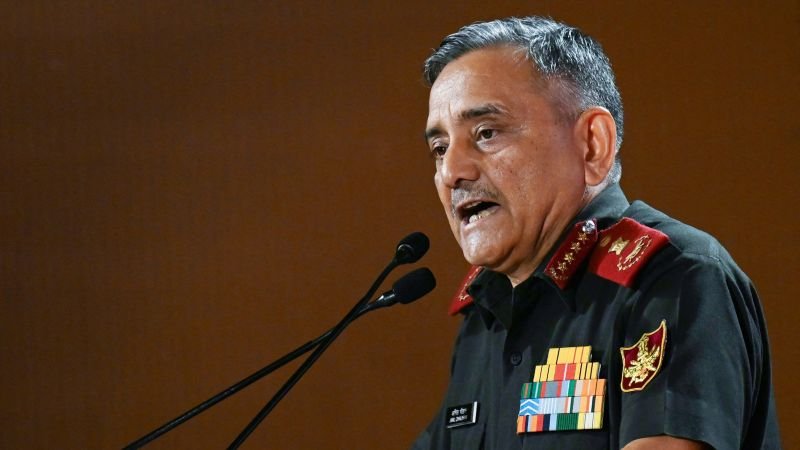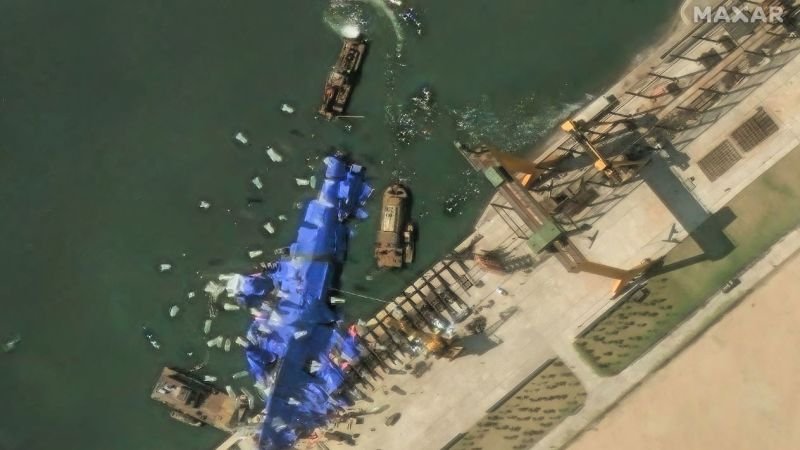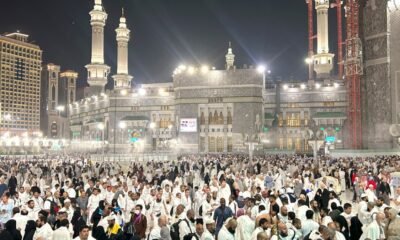Seoul, South Korea
CNN
—
After half a year of political turmoil, uncertainty and division, South Korea will vote for a new president to succeed Yoon Suk Yeol, the disgraced former leader who plunged the democratic nation into chaos by declaring martial law in December.
This election feels particularly significant; the country, a US ally and Asian economic and cultural powerhouse, has floundered for months with a revolving door of interim leaders while navigating Yoon’s impeachment trial and a multipronged investigation into the fateful night of his short-lived power grab.
All the while, South Korea’s economy has suffered, with US President Donald Trump’s trade war and a potential global recession looming in the background. Two men are each promising to help the country recover if elected – a lawyer turned politician dogged by legal cases who survived an assassination attempt, and a former anti-establishment activist turned conservative minister.
Polls open on Tuesday morning and a winner could be declared by Wednesday.
Here’s what you need to know.
Who are the main candidates?
The frontrunner is Lee Jae-myung, 60, of the liberal opposition Democratic Party.
A former underage factory worker from a poor family, Lee became a human rights lawyer before entering politics. He is a former mayor and governor, and most recently served as a lawmaker after narrowly losing to Yoon in the 2022 presidential election.
He survived an assassination attempt in January 2024 when a man stabbed him in the neck during a public event.
He again made headlines on December 3, 2024 – the night Yoon declared martial law and sent troops to parliament. Lee was among the lawmakers who rushed to the legislature and pushed past soldiers to hold an emergency vote to lift martial law. He live streamed himself jumping over a fence to enter the building, in a viral video viewed tens of millions of times.
On the campaign trail, Lee promised political and economic reforms, including more controls on a president’s ability to declare martial law, and revising the constitution to allow two four-year presidential terms instead of the current single five-year term.
He has emphasized easing tensions on the Korean Peninsula while holding on to the longtime goal of denuclearizing North Korea; he also supports boosting small businesses and growing the AI industry.
But Lee has also been dogged by legal cases, including several ongoing trials for alleged bribery and charges related to a property development scandal.
Separately, he was convicted of violating election law in another ongoing case that has been sent to an appeals court.
Lee denies all the charges against him. Speaking to CNN in December, he claimed he had been indicted on various charges “without any evidence or basis,” and that the allegations are politically motivated.
Lee’s main rival is Kim Moon-soo of the conservative People Power Party (PPP).
When Yoon left the party in May, he urged supporters to back Kim – a 73-year-old former labor minister, who had been a prominent labor activist at university, even being expelled and imprisoned for his protests. He eventually joined a conservative party, and stepped into the nomination after several rounds of party infighting.
The PPP initially selected Kim as its candidate; then dropped him, eyeing former Prime Minister Han Duck-soo instead. The party finally chose Kim after he filed legal challenges.
But the PPP remains deeply divided and its candidate trailed Lee in pre-election polling. In a statement after his nomination, Kim vowed to seek unity and build a “big tent” coalition to take on Lee, according to Reuters.
Kim has also promised to reform the country’s politics, judiciary and election management systems to rebuild public trust. His campaign emphasized making South Korea business-friendly through tax cuts and eased restrictions, and by promoting new technologies and nuclear energy.
Several third-party and independent candidates are also running for the presidency. They include Lee Jun-seok, a former PPP leader who founded his own conservative New Reform Party last year.
At the forefront of voters’ minds is the country’s flailing economy and rising cost of living. Youth unemployment has surged and consumption has declined, with the economy unexpectedly contracting in the first quarter of this year.
Part of that is due to Trump’s trade war – which has hit South Korea’s export-reliant economy hard. South Korea’s exports to the US fell sharply in the first few weeks of April after US tariffs kicked in, and the nation’s largest airline has warned the downturn could cost it up to $100 million a year.
Though officials from both nations have met for tariff talks, the political turmoil at home is likely slowing progress and hampering a possible trade deal until a new South Korean president is elected.
That’s why both main candidates have focused on the economy, promising to stabilize the cost of goods and improve opportunities in housing, education and jobs.
But there’s a host of other problems the next president will have to tackle, too – such as the country’s rapidly aging society and plummeting birth rates, which represent an urgent demographic crisis also seen in other countries in the region like Japan and China. Among the common complaints of young couples and singles are the high cost of childcare, gender inequality and discrimination against working parents.
Then there are regional tensions. There’s the ever-present threat from North Korea, which has rapidly modernized its armed forces, developing new weapons and testing intercontinental ballistic missiles that can reach almost anywhere in the United States. Experts have warned in recent years that the country may also be preparing to resume nuclear tests, which it paused in 2018.
Across the Yellow Sea lies China, which South Korea has a strong trade relationship with – but historically fraught diplomatic relations.
South Korea also maintains a close security alliance with the US, and hosts nearly 30,000 American troops in the country. In recent years, South Korea, Japan and the US have drawn closer together, working to counter Chinese influence in the strategically important Asia-Pacific region.
Yoon was removed from office in April following months of legal wrangling, after parliament voted to impeach him late last year.
It was a remarkable fall from grace for the former prosecutor turned politician, who rose to prominence for his role in the impeachment of another president – only to eventually meet the same fate.
Soon after, Yoon moved out from the presidential residency and into an apartment in the capital Seoul. But his legal battles are ongoing; he faces charges including insurrection, an offense punishable by life imprisonment or death (though South Korea has not executed anyone in decades). Yoon denies all charges against him.































